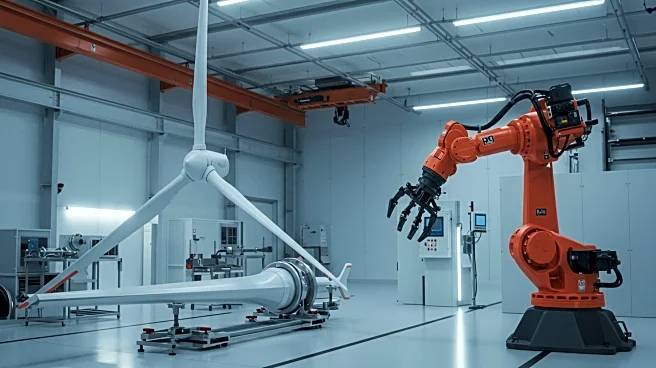What's Happening?
Broadwind Energy is undergoing a strategic turnaround to capitalize on the shift towards clean energy. Despite mixed financial results in Q2 2025, the company is realigning its operations by divesting non-core assets and focusing on precision manufacturing for wind infrastructure. The Heavy Fabrications segment saw significant growth, driven by demand for wind tower sections. Broadwind's strategic pivot aligns with the U.S. Inflation Reduction Act and the global push for wind turbine repowering, positioning the company to benefit from domestic production incentives and the growing repowering market.
Why It's Important?
Broadwind's strategic shift is crucial as it aligns with the broader energy transition towards renewables. By focusing on precision manufacturing and wind infrastructure, the company is positioning itself to benefit from significant market growth and government incentives. This transition reflects the industrial sector's adaptation to decarbonization, offering potential for increased profitability and market share. Broadwind's approach may serve as a model for other companies navigating the energy transition, highlighting the importance of strategic realignment in response to macroeconomic forces.
What's Next?
Broadwind plans to continue its operational restructuring, including the divestiture of its Manitowoc operations, to improve liquidity and reduce leverage. The company aims to expand its wind production capabilities and secure long-lead contracts in hybrid energy systems. As Broadwind scales its operations, it may face challenges such as policy uncertainty and competition from foreign manufacturers. However, its focus on domestic production and precision manufacturing provides a clear path for growth and margin recovery.
Beyond the Headlines
Broadwind's turnaround highlights the industrial sector's struggle to adapt to the energy transition. The company's focus on precision manufacturing and clean energy infrastructure reflects broader shifts towards sustainability and innovation. This strategic realignment may lead to long-term changes in the industry, promoting a more resilient and environmentally conscious approach to manufacturing.















